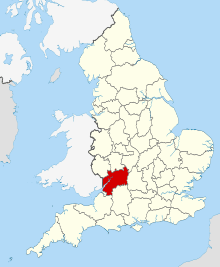Cirencester Abbey
Cirencester Abbey in Gloucestershire was founded as an Augustinian monastery in 1117 on the site of an earlier church, the oldest-known Saxon church in England, which had itself been built on the site of a Roman structure. The church was greatly enlarged in the 14th century with addition of an ambulatory to the east end. The abbot became mitred 1416. The monastery was suppressed in 1539 and presented to Roger Bassinge.
Post Dissolution
A house called Abbey House was built on the site in the late 16th century, remodelled in the 1780s, and then demolished in 1964 to be replaced by a block of flats. The area that contained the nucleus of the monastery is now a public park, and only the Norman Arch, an original gateway to the abbey, and parts of the precinct wall remain above ground.
The impressive and substantial three-storey porch of the parish church was built as an administrative building of the abbey and after 1539 the upper levels were used for some time as the town hall. The church itself is a relic and product of a long standing feud between the townspeople and the abbey. The latter, who were responsible for the chancel of the parish church have left us with a plain and unadorned building. The townspeople however were responsible for the remainder, and rebuilt the nave and west tower in an impressive style so as to far out-do the canons and at least win in a war of architecture if nothing else.
Bibliography
References
- New, Anthony. A Guide to the Abbeys of England and Wales. London: Constable. pp. 113–114.
- Platt, Colin. The Travellers Guide to Medieval England. London: Secker & Warburg. pp. 110–112.
| ||||||||||||||||||||||||||||||||||||||||||||||||||||

